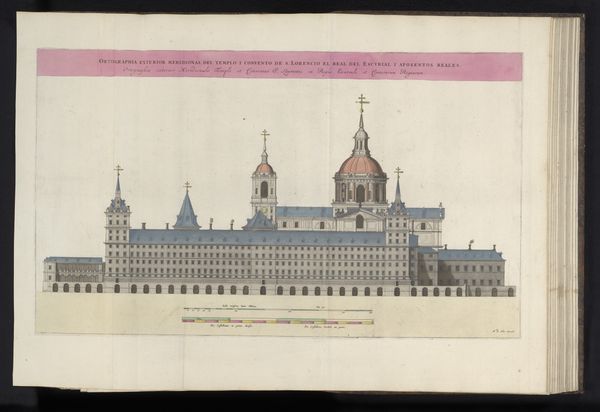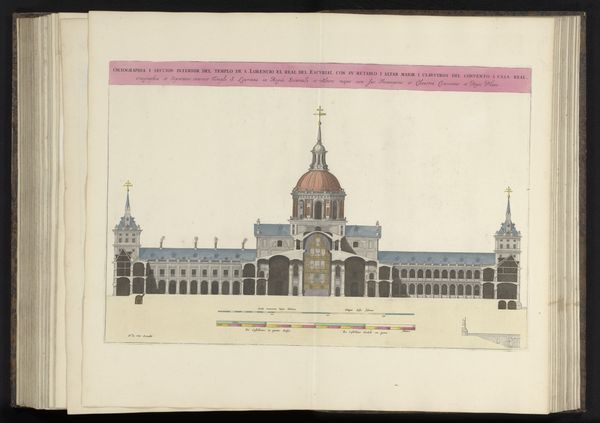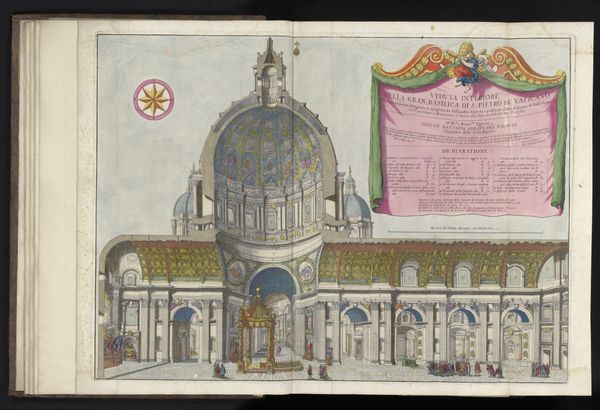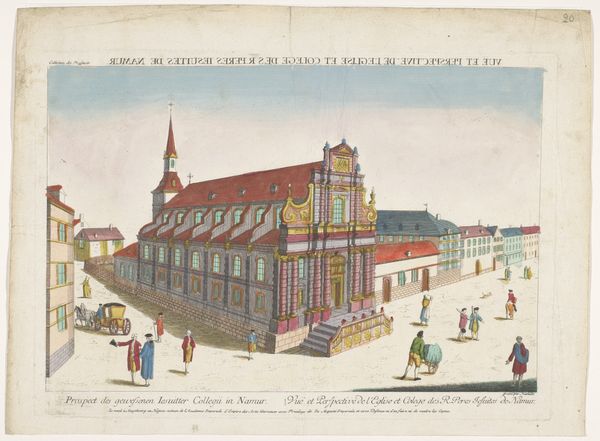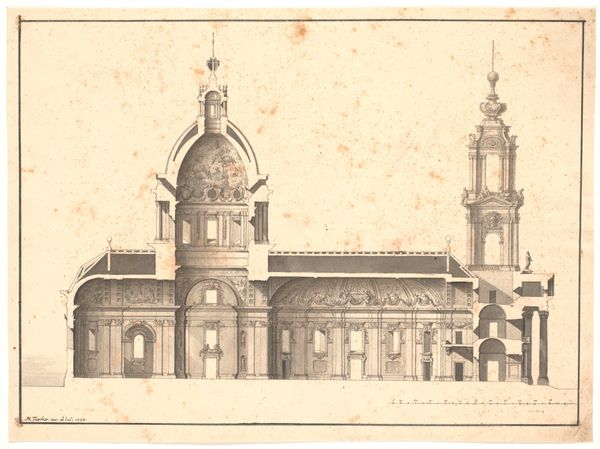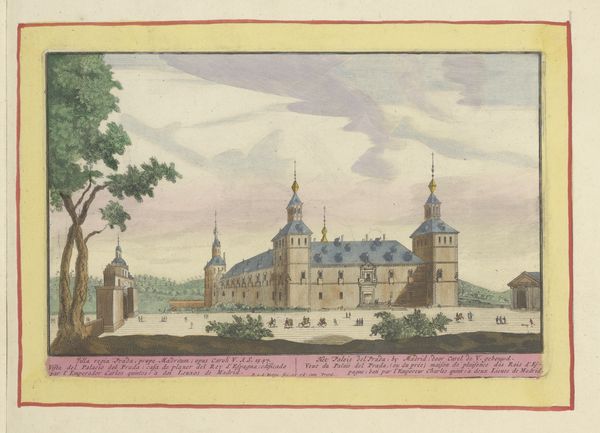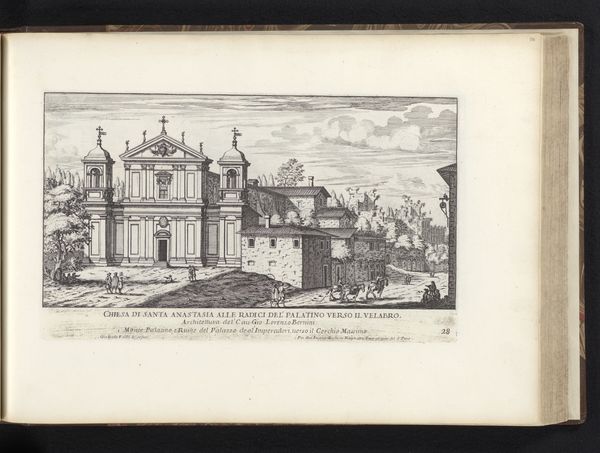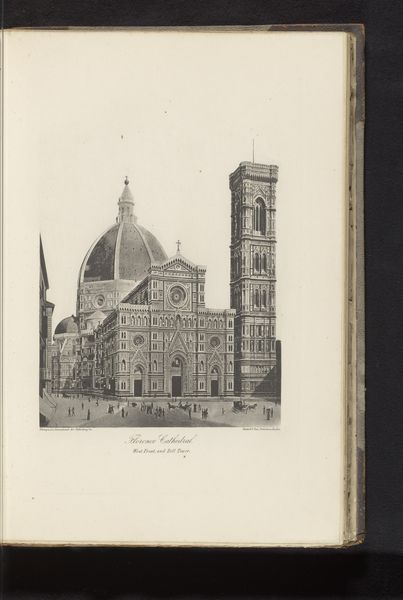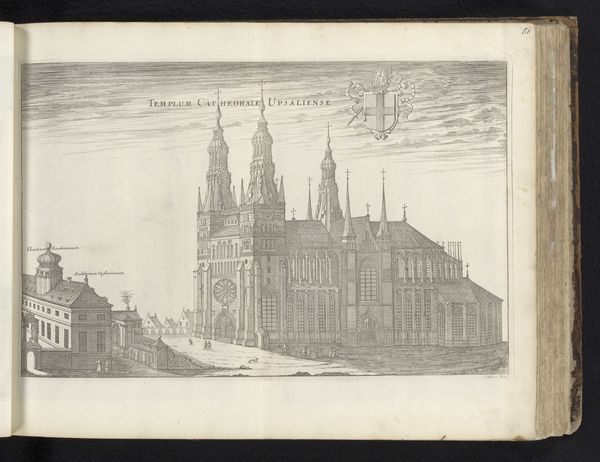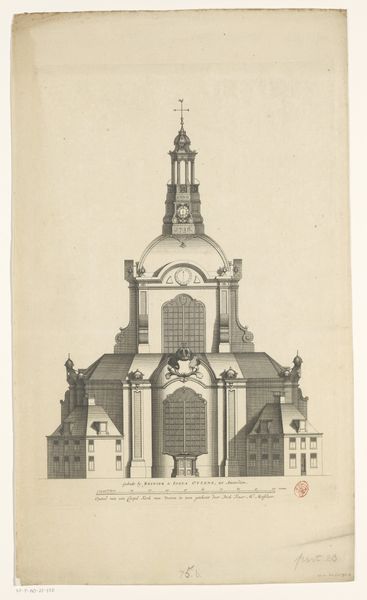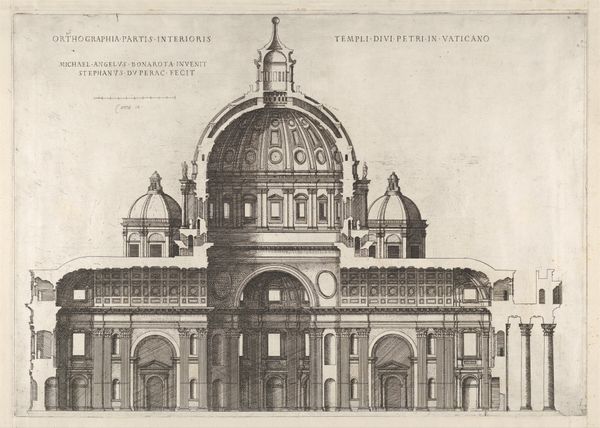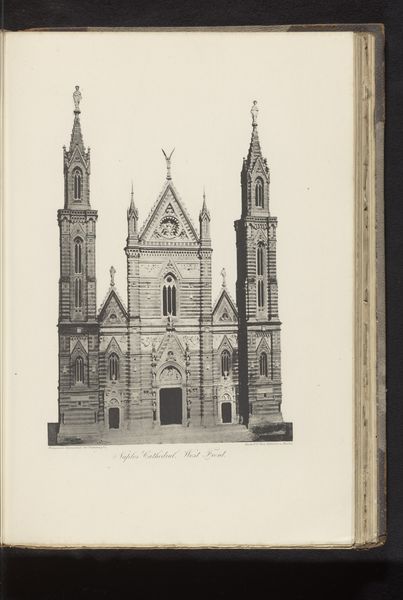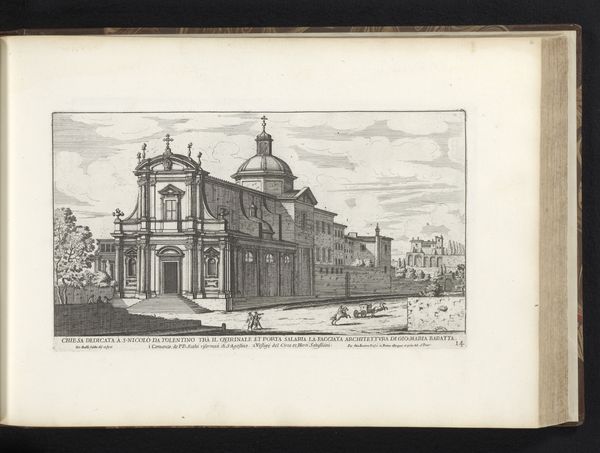
drawing, paper, watercolor, ink, architecture
#
drawing
#
baroque
#
paper
#
watercolor
#
ink
#
coloured pencil
#
watercolour illustration
#
architecture
Dimensions: height 389 mm, width 570 mm
Copyright: Rijks Museum: Open Domain
Curator: This lovely rendering presents the frontal view of the Church and Monastery of San Lorenzo. Attributed to Jeremias Falck, it dates sometime between 1665 and 1706 and utilizes ink, watercolor, and perhaps coloured pencil on paper. Editor: The first thing that strikes me is the order and symmetry; it’s incredibly well-balanced and imposing, almost like a stage set. Yet the pale colours also lend a strange delicacy to the architectural mass. Curator: Yes, that blend of grandeur and delicacy feels very Baroque, doesn't it? It makes me think about power, both temporal and divine. The visual rhythm established through the crosses suggests aspiration and order but there's also a palpable tension, a certain… theatricality? Editor: Definitely theatrical. All those repetitive windows, the imposing dome and spires, aren’t merely decorative, are they? What cultural narratives were architectural blueprints like this meant to convey to a contemporary public? Curator: Architectural drawings often were intended to be more than just technical specifications. The crosses on top the structure act as spiritual markers and offer that architectural vision as divine in purpose, meant to solidify a ruler’s association with piety, and maybe even project the glory of heaven onto earthly realms. Editor: That certainly tracks. Look at how deliberately the light falls, how details of depth are suggested – perhaps the intention was not only to illustrate but to subtly advocate for the realization of such grand design and all its social influence? Curator: Precisely! I'm particularly interested in how a contemporary audience might have interpreted the imagery - for the church-goers of that era, architectural design would have suggested much deeper significance. Editor: Yes. Today, looking at it, I consider the impact and interplay of institutions like the church, the monarchy and their impact through art; though separated from its original public, we can still glimpse something of this architectural design. Curator: For me, exploring architecture of that era and Falck’s artistry has emphasized again how profoundly symbols resonate and retain meaning across cultural boundaries. Editor: Agreed, understanding its design choices offers real insights into Baroque aesthetics as a method of communicating status.
Comments
No comments
Be the first to comment and join the conversation on the ultimate creative platform.
